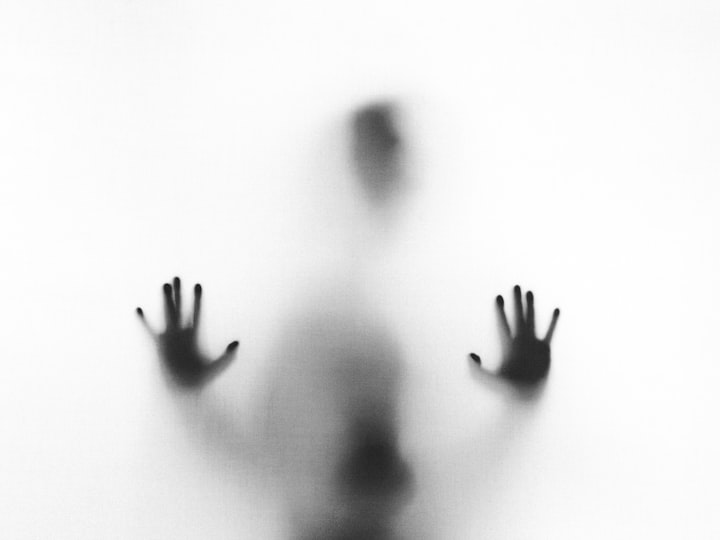Horror films and normal films
Horror films and normal films

Horror films and normal films, while both belonging to the broader category of cinema, differ significantly in terms of their themes, tone, audience reactions, and cinematic techniques. Let's explore some of the key differences between horror films and normal films:
1. Theme and Subject Matter:
Horror Films: Horror films are characterized by their focus on fear, suspense, and the supernatural. They often explore themes related to the macabre, the occult, and the unknown, featuring elements such as ghosts, monsters, vampires, zombies, and psychological terror. Horror films aim to elicit fear and unease in the audience, often through shock value and suspenseful storytelling.
Normal Films: Normal films, or mainstream films, encompass a wide range of genres and subject matters, including drama, comedy, romance, action, adventure, and documentary. Unlike horror films, normal films may not necessarily aim to evoke fear or horror in the audience, but rather entertain, inform, or provoke thought through engaging storytelling and compelling characters.
2. Tone and Atmosphere:
Horror Films: Horror films typically have a dark and ominous tone, with a focus on creating a sense of dread and foreboding. They often use atmospheric lighting, eerie sound effects, and haunting music to build tension and suspense. The atmosphere in horror films is often tense, unsettling, and filled with a sense of impending danger or doom.
Normal Films: Normal films may have a wide range of tones, depending on their genre and subject matter. They can be light-hearted and comedic, emotional and poignant, thrilling and action-packed, or thought-provoking and introspective. The atmosphere in normal films may vary greatly, from lighthearted and whimsical to serious and dramatic.
3. Audience Reactions:
Horror Films: Horror films are designed to elicit strong emotional reactions from the audience, particularly fear, shock, and suspense. Viewers may experience feelings of dread, anxiety, or terror while watching horror films, as they become immersed in the frightening and unsettling world depicted on screen. Jump scares, gore, and disturbing imagery are common techniques used to provoke visceral reactions from the audience.
Normal Films: Normal films may evoke a wide range of emotions from the audience, depending on their genre and narrative content. Viewers may laugh, cry, feel inspired, or experience a sense of awe while watching normal films, depending on the emotional resonance of the story and characters. While normal films may also include moments of tension or excitement, they are generally not intended to provoke the same level of fear or terror as horror films.
4. Cinematic Techniques:
Horror Films: Horror films often employ a variety of cinematic techniques to enhance their impact and create a sense of unease. These may include atmospheric lighting, shadowy cinematography, ominous music, sudden camera movements, distorted perspectives, and unsettling visual effects. The use of suspenseful pacing, clever editing, and innovative camera angles can also contribute to the overall sense of dread and tension in horror films.
Normal Films: Normal films utilize a wide range of cinematic techniques to convey their narrative and evoke emotional responses from the audience. These may include dynamic cinematography, expressive lighting, compelling performances, immersive sound design, and seamless editing. While normal films may incorporate elements of suspense or action, they generally focus more on character development, plot progression, and thematic resonance than on creating fear or terror.
In summary, while both horror films and normal films are forms of cinematic storytelling, they differ significantly in terms of their themes, tone, audience reactions, and cinematic techniques. Horror films aim to elicit fear and suspense through supernatural and macabre subject matter, whereas normal films encompass a wide range of genres and subject matters, with a focus on entertainment, emotional resonance, and storytelling craftsmanship.
5. Narrative Structure and Plot Devices:
Horror Films: Horror films often follow specific narrative structures and employ plot devices that are unique to the genre. Common tropes include the "haunted house" scenario, where characters encounter supernatural phenomena in a seemingly ordinary dwelling, and the "survival horror" plot, where protagonists must evade or confront a relentless antagonist or threat. Other narrative devices found in horror films include the use of flashbacks to reveal characters' dark pasts, the isolation of characters in remote or claustrophobic settings, and the escalation of tension through a series of escalating scares and revelations.
Normal Films: Normal films may also adhere to certain narrative conventions and plot structures, but they tend to be more varied and diverse in their storytelling approaches. Depending on the genre, normal films may follow traditional three-act structures, nonlinear narratives, or experimental storytelling techniques. While some normal films may incorporate elements of suspense or tension, they often prioritize character development, thematic exploration, and narrative depth over the sheer shock value or terror found in horror films.
6. Character Archetypes and Motivations:
Horror Films: Horror films often feature archetypal characters with distinct roles and motivations. These may include the "final girl," a resourceful and resilient female protagonist who typically survives until the end of the film, the "monster" or antagonist, whose motives may be supernatural, psychological, or rooted in revenge or trauma, and the "skeptic" or disbeliever, who serves as a foil to the other characters' fears and anxieties. Other common character archetypes in horror films include the "wise old mentor," the "comic relief," and the "innocent victim."
Normal Films: Normal films may also include archetypal characters, but they tend to be more nuanced and multidimensional in their portrayals. Characters in normal films often undergo arcs of growth, change, and self-discovery over the course of the story, grappling with complex moral dilemmas, personal conflicts, and interpersonal relationships. While some normal films may feature clear heroes and villains, others blur the lines between protagonist and antagonist, presenting characters with conflicting motivations and shades of gray morality.
7. Psychological and Symbolic Themes:
Horror Films: Horror films frequently explore psychological and symbolic themes related to fear, trauma, mortality, and the unknown. They may delve into the darkest recesses of the human psyche, confronting viewers with their deepest fears and anxieties. Symbolism and metaphor are often used to convey deeper layers of meaning, with supernatural elements serving as allegories for real-world issues such as addiction, mental illness, or societal oppression.
Normal Films: Normal films may also address psychological and symbolic themes, but they tend to do so in a more subtle and nuanced manner. Themes such as love, loss, identity, and redemption are common in normal films, explored through character-driven narratives, rich symbolism, and thematic motifs. While normal films may incorporate elements of fantasy or allegory, they often prioritize emotional authenticity and relatability, grounding their storytelling in the universal experiences and struggles of human existence.
8. Audience Expectations and Reception:
Horror Films: Horror films cater to audiences seeking thrills, chills, and adrenaline-pumping excitement. Fans of the genre enjoy the visceral experience of being scared and entertained, relishing the tension, suspense, and jump scares that are hallmarks of horror cinema. While some viewers may find horror films cathartic or thought-provoking, others may simply enjoy the adrenaline rush of being scared in a safe and controlled environment.
Normal Films: Normal films appeal to a broader range of audiences, spanning different ages, backgrounds, and tastes. While some viewers may prefer lighthearted comedies or feel-good dramas, others may gravitate towards intense action thrillers or thought-provoking dramas. Normal films offer something for everyone, catering to diverse tastes and preferences, and often spark discussions and debates about their themes, characters, and messages.
In summary, while horror films and normal films both belong to the medium of cinema, they differ significantly in terms of their narrative structures, characterizations, thematic content, and audience expectations. Horror films aim to evoke fear and suspense through supernatural and macabre subject matter, while normal films encompass a wide range of genres and themes, catering to diverse tastes and preferences. Despite these differences, both horror films and normal films have their own unique strengths and appeal, offering audiences a wide array of cinematic experiences to enjoy and explore.
About the Creator
WILLIAM DIAGO RODRIGUES
Hi! Everyone out there I am a Online Enterpreneur love to create, write and ellaborate different niches and write different Articles to entertain and help to give and spread the knowledge which i can incalcate through different search Engin
Enjoyed the story? Support the Creator.
Subscribe for free to receive all their stories in your feed. You could also pledge your support or give them a one-off tip, letting them know you appreciate their work.






Comments
There are no comments for this story
Be the first to respond and start the conversation.